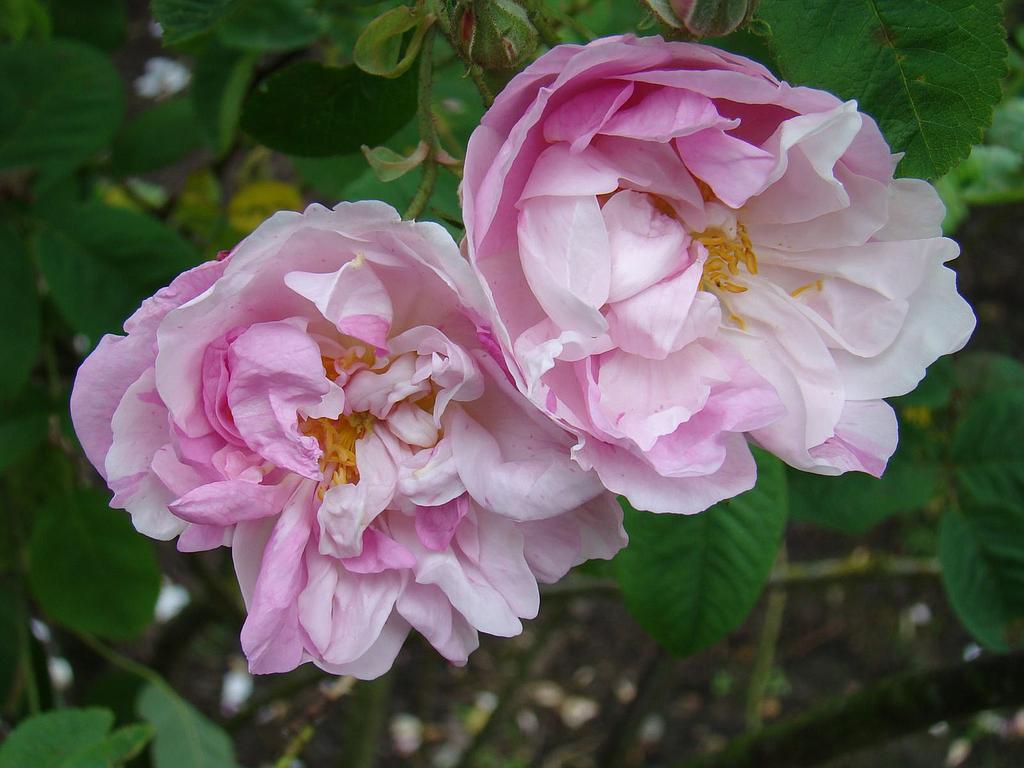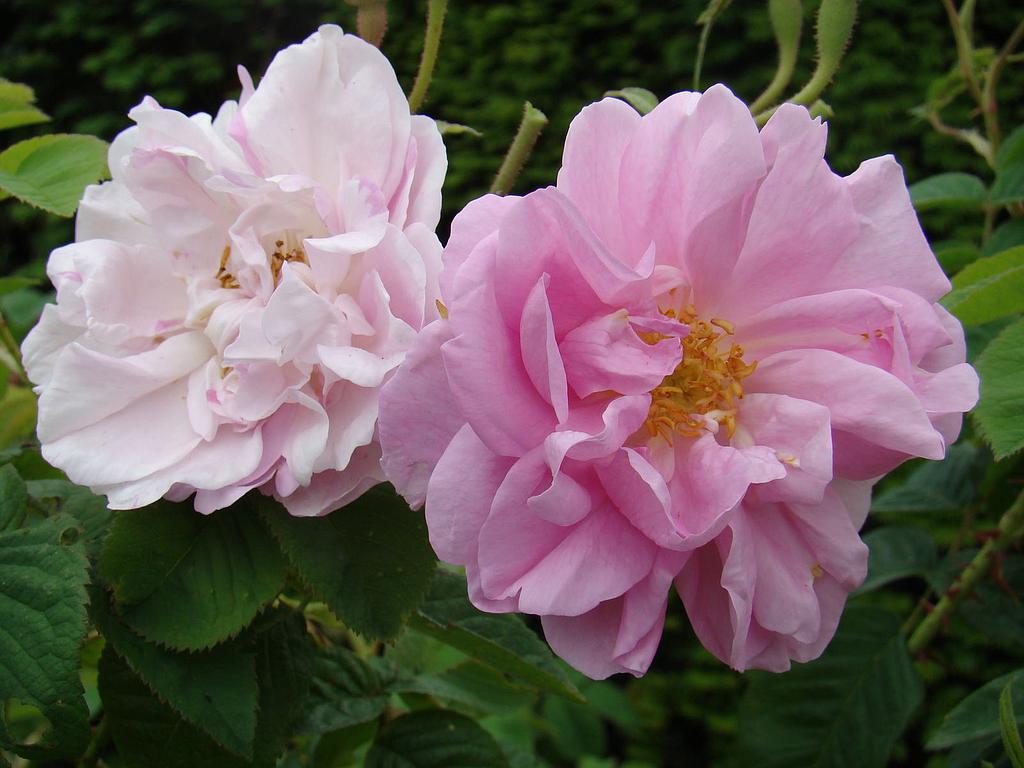York and Lancaster
Rosa damascena versicolor
The medium-sized semi-double fragrant flowers are not stable in color, sometimes they are white or pink or show both colors. Straight upright shrub. Is already known in our regions from before 1551.
- Standplaats: Possible in partial shade (>3u sun)
- Plantafstand: 150cm
- Vorstbestendigd: lager dan -15°C
'York and Lancaster' syn. R.damascena 'Versicolor , is a summer flowering damascena rose and has unusual flowers. They have an unstable color. On the same branch flowers can be very light pink, almost white, while others are dark pink and sometimes also bicoloured. Their fragrance is a typical damask scent that is pleasant and sweet.
The shrub grows strongly upright with light green leaves, downy underneath.
The rose got its name at the end of the War of the Roses where a long battle between the House of York of the House of Lancaster for kingship in England was settled by the House of Lancaster, Henry Tudor, in 1485. This happened through a marriage of Henry Tudor to Elisabeth of York, who united the 2 houses. A new blazon came with the rose 'York and Lancaster' which united the colors of both houses white and red.
Currently more of a collector's item than a plant with great garden value. Needs rich soil to flower well.
'York and Lancaster' syn. R.damascena 'Versicolor , is a summer flowering damascena rose and has unusual flowers. They have an unstable color. On the same branch flowers can be very light pink, almost white, while others are dark pink and sometimes also bicoloured. Their fragrance is a typical damask scent that is pleasant and sweet.
The shrub grows strongly upright with light green leaves, downy underneath.
The rose got its name at the end of the War of the Roses where a long battle between the House of York of the House of Lancaster for kingship in England was settled by the House of Lancaster, Henry Tudor, in 1485. This happened through a marriage of Henry Tudor to Elisabeth of York, who united the 2 houses. A new blazon came with the rose 'York and Lancaster' which united the colors of both houses white and red.
Currently more of a collector's item than a plant with great garden value. Needs rich soil to flower well.
- Standplaats: Possible in partial shade (>3u sun)
- Plantafstand: 150cm
- Vorstbestendigd: lager dan -15°C
Alternative plants:
Our Selections
Recently viewed:
Order on our website, by mail or phone
We are happy to help you



